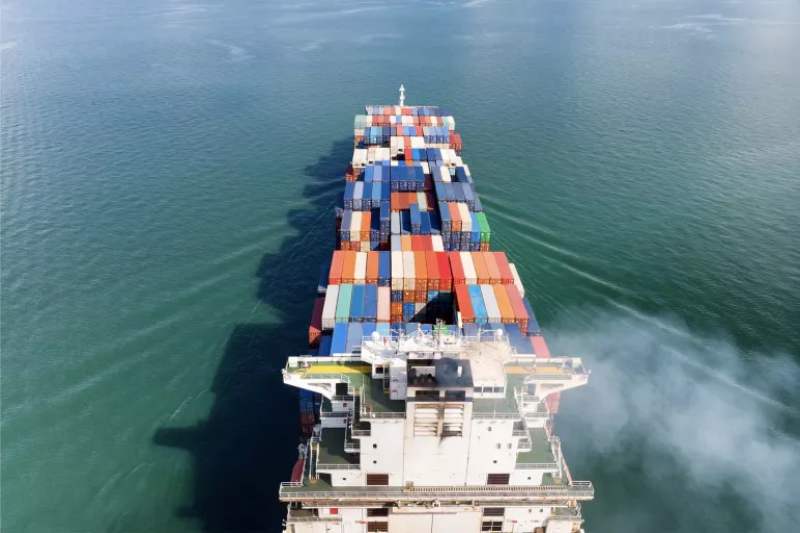
This UK-based Startup May Capture 95% of The Carbon Emissions From A Ship
- Business
- February 8, 2024
The youthful entrepreneur co-founded Seabound, a London-based firm with the goal of decarbonizing the maritime sector, two years ago.
In contrast to other forms of transportation such as buses or cars, large shipping corporations have little technology available to reduce pollution. Since the industry contributes more than air travel to global carbon dioxide emissions (3%), immediate actions are required.
Seabound’s response? a carbon capture system capable of absorbing 95% of the CO2 emissions from cargo ships before they reach the environment.
A prototype of Seabound’s technology was put on a sizable cargo ship operated by the massive British shipping company Lomar towards the end of last year. A £1.2 million grant from the UK government’s £60 million Clean Maritime Demonstration Competition was used to finance the pilot.
When traveling between Turkey and the Persian Gulf for two months, the gadget was able to extract 90% of the sulfur dioxide and 78% of the carbon emissions from one of the ship’s auxiliary engines.
“While still early days, our first pilot project proves that our technology works and that it is possible to take on this huge, complex problem,” Fredriksson tells TNW. “This breakthrough demonstrates that the shipping industry doesn’t have to wait for new fuels or solutions to reduce its emissions in the future — we can start to capture carbon from the existing fleet right now.”
How Does It Operate?
The massive diesel engines of a cargo ship produce exhaust gas, which is captured by carbon capture technology from Seabound. The fumes are directed into a large, high-pressure chamber that is filled with calcium oxide pebbles rather than entering the atmosphere.
When the CO2 in the exhaust gas combines with the pebbles, it becomes limestone, or calcium carbonate. After that, the limestone is kept on board the ship until it is unloaded at the dock.
Once on land, the limestone can be broken down to create fresh pebbles and pure CO2 or utilized as building material. This carbon dioxide can be sold to businesses so they can make electrofuels, or it can be buried underground. These are a group of synthetic fuels that can be utilized, such as methanol and green ammonia.
Seabound would profit from the sale of its hardware to shipping firms in addition to receiving payment for the processing of the stones.
The company states that after successfully completing its pilot project, it will now construct a “bigger and better” system that can remove up to 95% of CO2, a level that has been reached during testing but not yet in an actual environment.
Measuring only 6 by 3 meters, a full-scale apparatus that could capture the fumes of an entire cargo ship would be tiny in comparison to the enormous vessels, some of which are taller than the Empire State Building.
Shipping’s Carbon Conundrum
Roughly 90% of the items in the world are transported by the global shipping industry. Around 50,000 cargo ships are currently in service, and the majority of them run on diesel, which produces a lot of CO2. The maritime industry would rank sixth in the world in terms of emissions, just behind Japan and one spot ahead of Germany.
Bunker fuel, a low-grade, tar-like type of oil that can contain 3,500 times more harmful sulfur than regular automobile diesel, is another common fuel used by large oceangoing ships.
The issue is that there are now no large-scale, zero-carbon solutions available for use with cargo ships.
Huge freight vessels simply cannot have the electricity to travel great distances with current battery technology. There have also been discussions on nuclear propulsion, however the concept is still debatable and carries some risks.
Alternative, zero-emission fuels like ammonia and hydrogen are your best option. However, they are still in the early stages of development and will necessitate the construction of completely new ships, which will likely come at a cost of more than $1 trillion.
The member states of the UN’s International Maritime Organization decided last year to reduce emissions by 20–30% by 2030 and achieve net-zero shipping by 2050.
Frediksson thinks that in order to reach these goals, quick action is required. “We need to start decarbonizing today, but alternative fuels for ships are at least 10 to 20 years away,” she states.
Chartering a Greener Course
The startup’s goals have appeal, but there are still obstacles to overcome. The quicklime, or calcium oxide pebbles, that the apparatus uses are produced by burning limestone at a high temperature, which releases carbon dioxide. Furthermore, after it is discharged back on land, it might be challenging to find markets for the pure CO2 byproduct, despite the fact that the pebbles are widely available and reasonably priced.
A circular value chain that converts pure CO2 into ammonia or methane for ship propulsion and then captures the emissions in the pebbles to produce more of these green fuels is one option that Fredriksson sees.
Additionally, the carbon capture devices might be combined with other environmentally friendly maritime innovations such as WindWings or enormous kites that pull a ship along while using less fuel.
Although the project is still in its early phases of development, Frediksson and her team have big expectations. By 2030, Seabound hopes to have 1,000 cargo ships capturing CO2; by 2040, that number will rise to 10,000 cargo ships.
The business has so far raised $4.4 million in initial money, with support from Lomarlabs, Lomar Shipping’s venture capital division. According to Frediksson, the business plans to finish a Series A investment round this year, with the goal of using the proceeds to launch its first product in 2025.